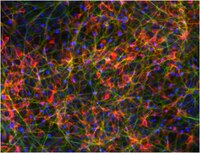GF091 Sigma-AldrichSoluble RANK Ligand (sRANKL) Protein, Recombinant human
The recombinant human sRANKL protein is produced in E. Coli.
More>> The recombinant human sRANKL protein is produced in E. Coli. Less<<Recommended Products
Overview
| Replacement Information |
|---|
Key Specifications Table
| Key Applications | Species | Source | Purity |
|---|---|---|---|
| CULT | Human | E. coli | Greater than 98% by SDS-PAGE and HPLC analyses. Endotoxin level is less than 0.1 ng per μg (1EU/μg). |
| References |
|---|
| Product Information | |
|---|---|
| HS Code | 3504 00 90 |
| Presentation | Sterile filtered, and then lyophilized from 5 mM sodium phosphate, pH 7.6 + 75 mM NaCl. Reconstitute with distilled water to a concentration of 0.1-1 mg/mL as a stock solution. Solution can then be diluted into other aqueous buffers for immediate use. |
| Quality Level | MQ100 |
| Applications | |
|---|---|
| Application | The recombinant human sRANKL protein is produced in E. Coli. |
| Key Applications |
|
| Physicochemical Information |
|---|
| Dimensions |
|---|
| Materials Information |
|---|
| Toxicological Information |
|---|
| Safety Information according to GHS |
|---|
| Safety Information |
|---|
| Packaging Information | |
|---|---|
| Material Size | 10 µg |
| Transport Information |
|---|
| Supplemental Information |
|---|
| Specifications |
|---|
| Global Trade Item Number | |
|---|---|
| Catalog Number | GTIN |
| GF091 | 04053252740299 |
Documentation
Soluble RANK Ligand (sRANKL) Protein, Recombinant human SDS
| Title |
|---|








